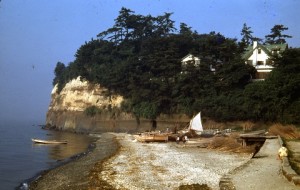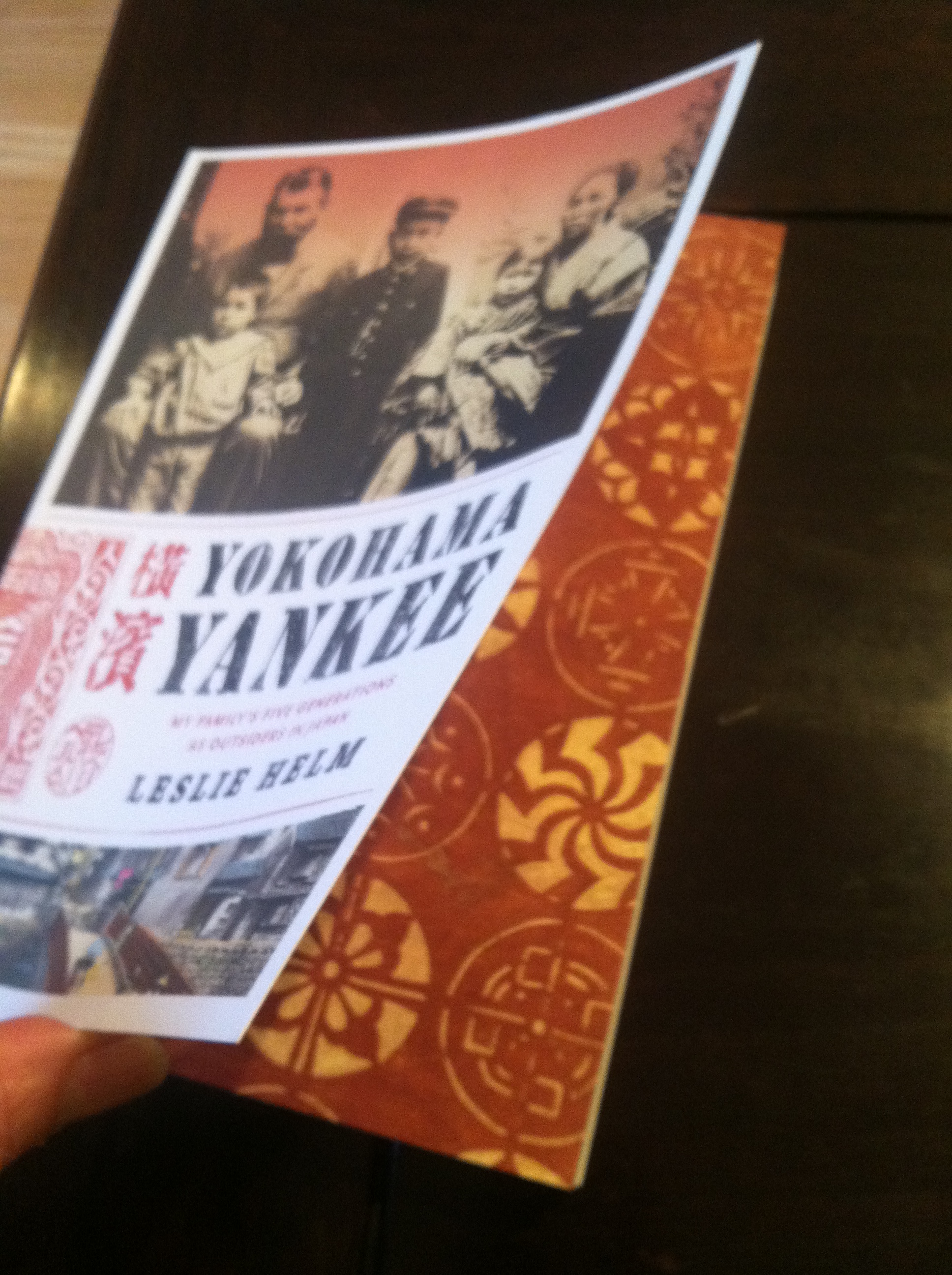This is Hachiojiyama in Honmoku, Yokohama. My great grandfather bought the hill in about 1900 and the people in the area came to be call it Herumu-yama, or Helm hill. My grandfather and several of his siblings had summer places on that hill. My great aunts used to row around the bend to Sankeien, where the family there would serve barley tea. (before it became a park) This picture was taken by my father after the war. In pre-war days there used to be a staircase down to the beach. When I was at the LA Times, our research assistant says her mother recalls how one of the Helm mothers would ring a gong to call the kids up for dinner. I walked on that beach as a young child, but all of that coastline was later filled in and is now sadly lined with oil storage tanks and refineries.
Tags
Comments are closed.

Hello Leslie,
The Honmoku Helm house looks like the one we rented from your Dad in late 50’s or early 60’s. It had a view of the sea and had a dozen different heating arrangements. Many happy memories — birthday parties, Christmas celebrations, and the birth of two of our four children and bringing them back
from Bluff Hospital. The kids used to play on the beach below, and we would have to climb about 100 steps to get back up the hill.
I talked to Andrea (Helm Boyd) because I had her phone number from when we visited with Barbara at their lovely..home. The phone number I have for your Mom does not work, so would appreciate a number at which I can reach her.
Lesley, I so enjoyed your book. My daughter, Mary Beth, sent me a copy and I could hardly put it down. My son, Richard Ash, is reading it now, and then daughters Connie and Jennifer.
.
Connie Ash
1107 N.W. Oak Ave
Corvallis, OR 97330
ihumalong@Yahoo.com
.
Interesting. Do you remember what it was like inside? Did you ever connect with my mother? Hope to connect over the phone soon.
I ordered a second hand book, ex libris, hoping for a hard cover copy, but got instead a delapidated copy with missing pages. Never mind, it was a charity store, and, due to condition, I felt able to remove pages to better scan images. I have since bought a new copy, actually cheaper! Never mind.
Yes, an excellent read, and parts of it bring to life this scenes hinted at by Norah.
Trying to understand the mystery of Hachojiyama, I scanned several maps, and map-excerpts from the screen, and using Google Translate Free-hand graphical input, managed to transcribe some of the Kanji.
On pages 46 and47, you have a map. Just above the compass rose, the left extremity of the Bluff complex looks like a beast about to eat a biscuit.
Inside the biscuit, you can see Kanji characters upside down. Rotating the page, you can see they are written “八 牛屠”. Google gives the phonetic for this as “Hachiushihofu”, which in crude interpretation given is: Eight Cattle Slaughter. So I think the proper name for the hill was “八 牛 山”, or HachiUshiYama. The pronunciation is very similar to Hachojiyama, and the Mountain of eight princes is much more noble than the hill of eight cows!
The Bretts map labels the formation where the biscuit is about to be eaten as the Juniten Temple, however, your map shows that Juniten is a districk of Honmoku. Another biscuit, just in front of the beast.s nose containa the label: “本牧十二天” followed by a 6th character I could not copy. The first 5 symbols read: HonMokuJuNiTen, and this has no specific referenc to what the Bretts map calls a shrine. Indeed on you picture on pages 86 and 87, the Japanese, reading right to left, here shown left to right, reads: “横濱本牧十二天”. Google translates as: “Yokohama Honmokujuniten”.
Now a question: The picture you use on this site, and the watercolor on page 83 by C R Bernard, The big house seems to be in the area halfway down the cliff, which, when I examine the steps down the cliff, I find they enclose a plot which Brett numbers as 157. The house behind it, to the left then would be on plot number 161. Your map shows this plot to be divided left from right, and the rhs part is labeled HS, with the ‘S’ reversed left to right.
I wondered, was this supposed to be H. Y. for Helm Yulius, ‘J’ in Japanese being pronounced as in English, whereas, in German, it is as an English, or Japanese ‘Y’.
Now I begin to be fairly sure that the house that TRS rented was probably either 153, or 158, or maybe, 152, or 159.
It is not all lost in the modernisation. Much of the hill is still green and tree covered. Most of the elevated land is now the grounds of the Washin Zaka Hospital, so is kept green as fire-break park-land. There still remains some beauty. At least this area has not been overdeveloped.
The original bottom 50 or so steps have been lost into what was the sea, but the step way has been diverted, and what was the beach in your picture is now a children’s play area. It could have been so much worse. Where the sea was, certainly is.
P.S. I forgot to give you the link to some relevant items I have posted,
Please look here: https://app.box.com/s/srsvpn36rooo7l50e1q2